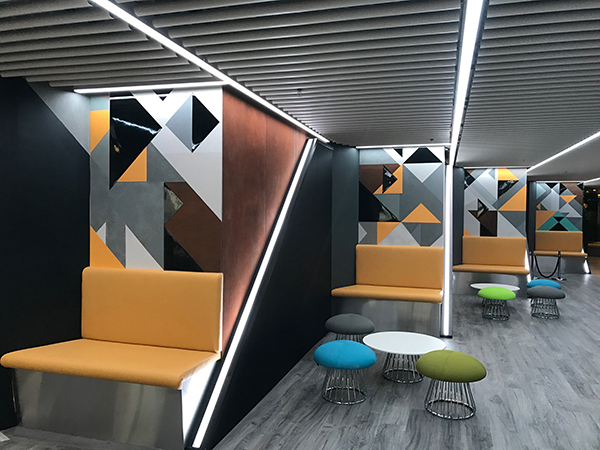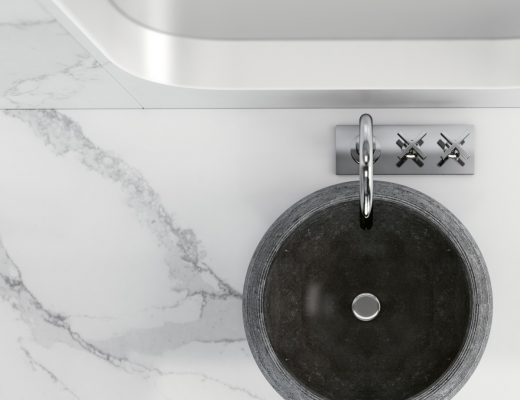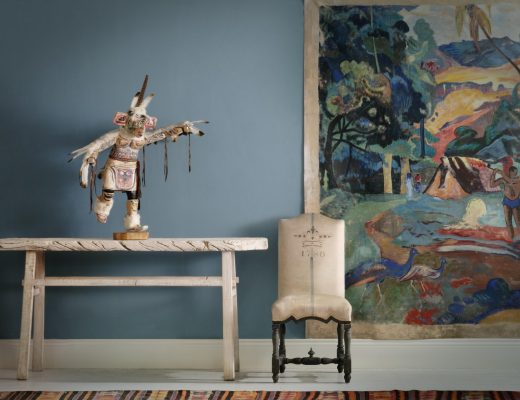Design tips for your new home office
By Patrick McCrae, CEO of ARTIQ, one of the UK’s foremost art consultancies The coronavirus outbreak has made continuous remote working a sudden reality. With most of us Design tips for your new home office in it for the long haul, it is important to create an inspiring and organised workplace that enables you to work as effectively and efficiently as possible.
Practically, designing a creative home office doesn’t need to be expensive. Soft furnishings, interesting artwork, accessories and carefully selected colour schemes can transform any workplace environment, and may even enhance wellbeing, productivity and creative thinking.
Location, location, location
It’s important to be realistic about how much space you can dedicate to your new working conditions. If your home is on the smaller side, consider creating a stylish multifunctional space.
Everything from a chimney alcove, the gap under the staircase or a narrow corridor or could be transformed into a made-to-measure home office workstation. Alternatively, you could redesign your living room table or bedroom dresser to create a multi-purpose workspace.
If possible, choose a spot with as much natural light as possible to maximise outside views and create a more idyllic setting.
Furnishings
When considering furniture, don’t be afraid to use it for other than its intended purpose, particularly if you are short of money or space. Old clothing armoires with shelves could be repurposed as filing space, and the dining room table could easily double up as a desk.
If you need to purchase a new desk, consider creating a bespoke fitted unit, to help maximise on space and avoid unnecessary mess from charging points and printer cables.
Add your accessories
Carefully chosen accessories will help breathe some life into your new office space, so consider cosying things up by adding softer touches such as a carpeting or a rug. Simple features such as placing a house plant on your desk will also help to make the area more homely and inviting.
Hanging postcards and posters or displaying personal photographs will also add a source of inspiration and personality.
Select your artwork
Even if you are crunching data all day, filling your workspace with vibrant art will energise your space and help keep you motivated. Form, light and colour are particularly important for productivity, so artworks are an essential addition to any home office.
There are lots of techniques that can be used to create DIY artworks, such as framing wallpaper samples or painting onto simple abstract canvases. Alternatively, you can find businesses like ARTIQ who will assist you in renting contemporary artworks to more transform your home offices. We will also be running an online series arts engagement programmes and art classes over the next few weeks, that can give you further guidance on the right artworks for your home office interiors.
When displaying your artwork, try to create a juxtaposition. For example, don’t match the colour of the wallpaper to the colours in the artwork; aesthetically, it’s more striking for the environment to ensure that the eye is drawn to the artwork. This notion extends beyond colour to the style of the building. Classic art in contemporary interiors and contemporary works in more traditional settings are stunning when executed well.
It is also important that you don’t hang your artwork too high. The middle of the piece should be around the eye height of the average person, which for most people is around 145-155cm from the floor to the middle of the work.
Consider your colour schemes
Studies continue to show that what we see and interact with has a direct impact our wellbeing. Different colours affect our moods in different ways, so it’s important to get them right. While plain white might feel tempting, an all-white room risks creating a clinical atmosphere, so don’t mute your room unnecessarily. Instead, choose your colour scheme with your work requirements in mind.
Strong colours with refined compositions can help add inspiration to your working day, whilst block colours and strong lines are preferable if your job requires long periods of focus and concentration.
If your job is particularly stressful, you may prefer to use abstract content and neural palettes to promote calm and tranquillity.
Keeping yourself engaged and making sure you have a changing, vibrant home environment is vital to keeping creative and ensuring your productivity stays high. Many creative institutions, ARTIQ included, are producing inspirational content that can be accessed online advice from your desk to ease the process.






